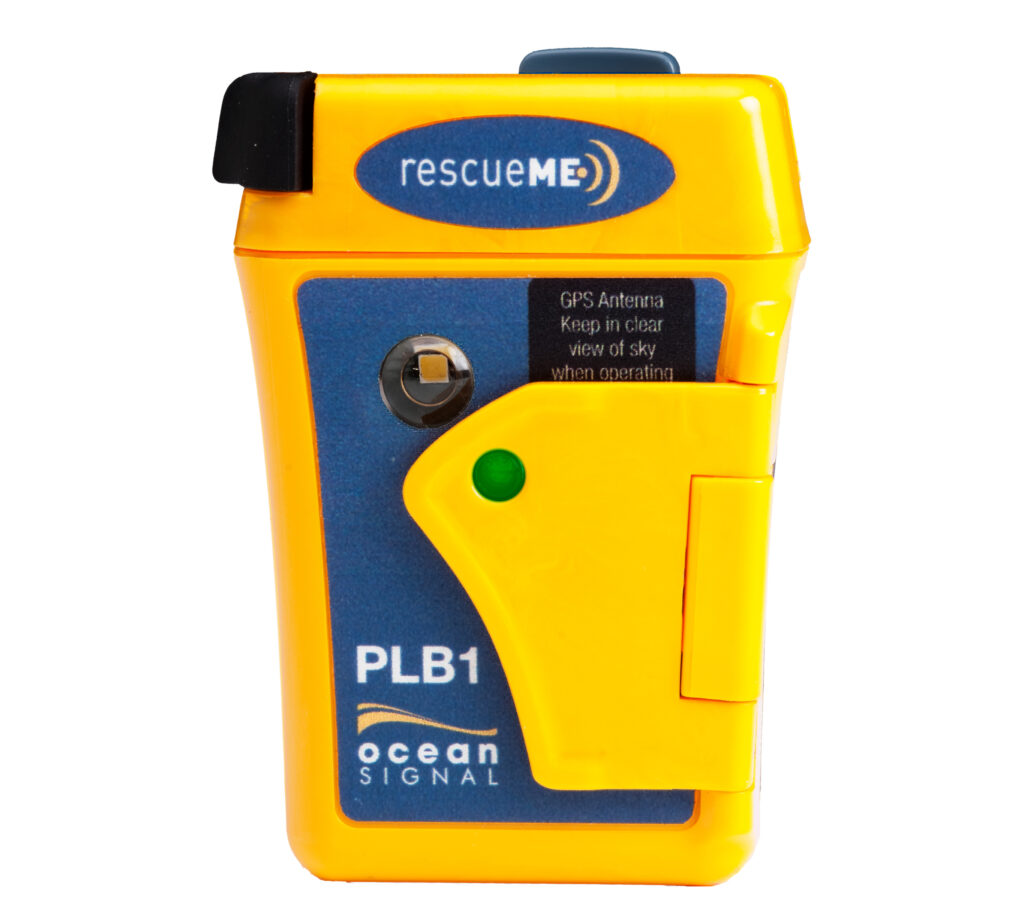UK marine safety specialists Ocean Signal and Ocean Safety are issuing important advice to boat owners about the benefits and responsibilities of owning a 406 MHz beacon on ‘406Day’ (#406Day20) today, Monday, April 6th.
Personal Locator Beacons (PLBs) and Emergency Position Indicating Radio Beacons (EPIRBs) are carried ready for activation in an emergency to instantly access rescue services via the designated 406 MHz Cospas-Sarsat satellite system. Each 406 MHz beacon transmits a unique digital code that identifies the type of beacon and allows registration data such as the beacon owner, the type of vessel and emergency points of contact, to be associated with the device.
As leading suppliers of PLBs and EPIRBs, Ocean Signal and its distributor Ocean Safety have joined forces to raise awareness about the life-saving technology and to highlight safety checks and procedures for beacons as boaters prepare for the season.
The annual day was initiated by Ocean Signal’s sister company, Florida-based ACR Electronics, eight years ago to help people understand how to register, use and maintain their beacons correctly. The day is also a celebration of the tens of thousands of lives saved by using 406 MHz beacons and the Cospas-Sarsat Satellite system.
Ocean Safety has recently appointed round the world sailor Dee Caffari MBE to represent the company as an ambassador for its ranges of lifesaving products, while supporting a strong message of safety awareness.
Dee said: “406Day is a really good opportunity to highlight some important safety checks and procedures for beacon owners. EPIRBs, for the vessel, and PLBs, which are registered to a person, are a fast and effective way to send an alert and enable the search and rescue authorities to identify and locate a casualty. However, it is vital that these essential safety devices are properly registered and maintained so that the beacons can be relied upon to function correctly when activated. The Cospas-Sarsat EPIRB system and its use of 406 MHz signals save lives, but it is a technology that requires responsibility.”
Ocean Signal provides a free replacement beacon for all owners of its rescueME and SafeSea devices who activate their PLB or EPIRB in an emergency. Ocean Safety offers visual inspection and test sequence check of all leisure beacons at their four UK branches. The company can also assist with registry queries, battery replacements, fitting PLBs to customer lifejackets, safe disposal of unwanted PLBs and EPIRBs and special offers on new units.
Advice for beacon owners
Jointly committed to improving the safety of those out in the water, Ocean Signal, Ocean Safety and ACR Electronics offer the following checklist to serve as a reminder to check expiration dates and ensuring correct registry:
- Is your EPIRB/PLB registered?
- When was your EPIRB/PLB last tested/serviced?
- What is the battery life of your EPIRB/PLB and when does it need to be replaced?
- Do you know how to self-test your EPIRB/PLB to ensure it is working correctly?
- Does your family know what an EPIRB/PLB is and how to activate it?
To help answer the questions, the following advice is provided to ensure best practice for beacon ownership:
1. Register and update your 406 MHz beacon registration
All beacon owners should register their device with the appropriate authorities. UK users of EPIRBS and PLBs should register their details on the UK Beacon Registry at www.gov.uk/406beacon. This free and simple registration will speed up a rescue and provide Search and Rescue with information about you and your vessel which is vital in an emergency. In other countries contact your local authority. Details can be found at www.406registration.com/countriessupported.aspx.
2. Check your 406 MHz beacon battery expiration dates
Users must check the expiry dates to ensure the EPIRB or PLB will function correctly when required in an emergency. When selecting your beacon, key considerations include the added convenience of user replaceable batteries and the reassurance of a long battery operating life. Ocean Signal leads the industry in these areas of innovation. The rescueME PLB1 has a seven-year battery life, while the rescueME EPIRB1 has even longer battery life at a massive ten years between routine replacements.
3. Test your 406 MHz beacon
You should test your EPIRB using the ‘self-test mode’ once a month to monitor the 406 MHz RF power, as well as the 121.5 MHz homer RF power, synthesiser lock and battery voltage under load. Ocean Signal also recommends regular inspection to ensure: no obvious signs of damage, including the state of the antenna; secure mounting on the bracket or float free housing; the lanyard is not attached to any structures; the HRU (Hydrostatic Release Unit) in the case of a float free housing is within the specified expiry date; the EPIRB and mounting is cleaned, only using a damp cloth. It is also recommended to carry out routine testing of your PLB to ensure it is in good working order, using the specified ‘Test’ key. Ocean Signal suggests you do not test the GPS receiver more than once a year as it expends significant amounts of battery energy.
To celebrate 406Day, don’t miss the chance to win a free Ocean Signal rescueME PLB1 by visiting @OceanSafetyLtd on Facebook and Instagram between Monday, April 6th and Monday, April 20th. For information about the full range of products available from Ocean Signal, please go to www.oceansignal.com. For more information on Ocean Safety, go to https://www.oceansafety.com/.

